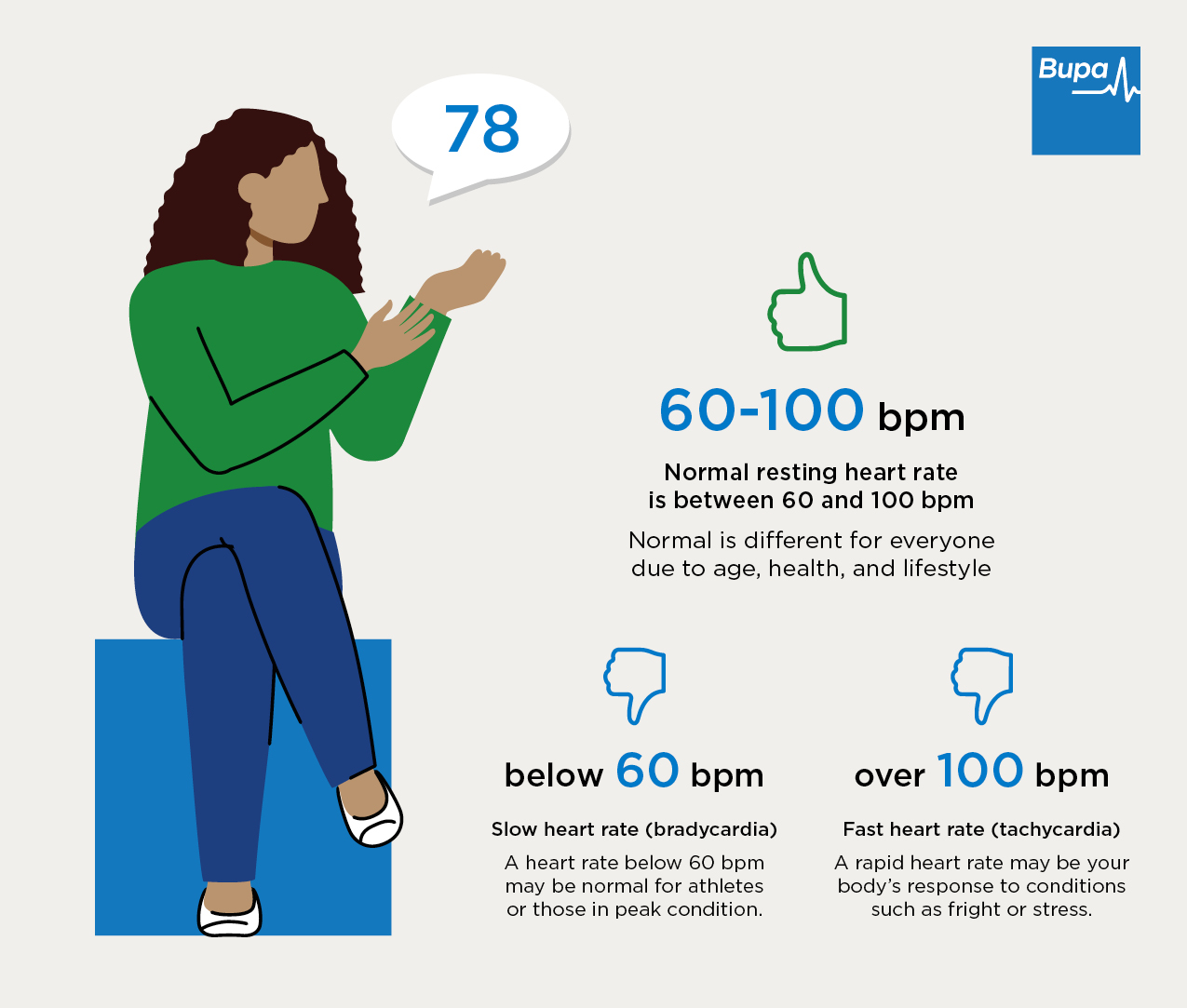Your resting heart rate (RHR) is an average measure of how many times your heart beats per minute (bpm) when your body is at rest. Knowing your RHR can be a useful indicator to help you gauge your general health and fitness. Follow the below guides to help you measure your RHR and understand the results.
How do I measure my resting heart rate?

Palpitations and atrial fibrillation
Palpitations are when your heartbeat becomes more noticeable. You may feel as if your heart is beating more strongly, perhaps it might feel irregular or like it’s missing a beat. It’s important to remember that palpitations are a symptom rather than a diagnosis, and often don’t indicate a health problem - they can be caused by many everyday things such as stress or exercise. However, a feeling of an irregular heartbeat should always be checked with your GP or health professional, as it could be a symptom of an underlying condition such as atrial fibrillation.
Atrial fibrillation (AF) is an abnormal heart rhythm, or arrythmia, which happens when the top two chambers of the heart, known as the atria, quiver or twitch. If this happens to you, it may feel like your heart is fluttering or beating irregularly (palpitations). AF is the most commonly diagnosed arrhythmia, and can come and go (known as paroxysmal AF) or it can be persistent and more long lasting. Whilst AF can be asymptomatic, typical symptoms include tiredness, shortness of breath, light headedness, and chest pain. One of the complications of AF is the increased chance of blood clots forming, which in turn increases the risk of a having a stroke.
Abnormal heart rhythms can be detected using electrocardiograms (ECGs). For paroxysmal AF, you might need a longer period of monitoring to capture the abnormality when it happens and there are portable and wearable devices that can do this.
What is a normal resting heart rate?

Bradycardia and Tachycardia
Bradycardia is a heart rate that's slower than normal (below 60 bpm). Sometimes bradycardia doesn't cause symptoms or complications and can be entirely normal for some people, including people in good physical condition. However, it can become serious if the heart is unable to pump enough oxygen-rich blood to the body. If this is the case, it may cause symptoms such as dizziness, fatigue, and shortness of breath.
Tachycardia is a heart rate that's faster than normal (above 100 bpm). Like bradycardia, sometimes tachycardia doesn’t cause any symptoms or complications, and can be entirely normal for some people. For instance, the heart rate typically rises during exercise, or as a response to stress. However, tachycardia may be an indicator of an abnormal heart rhythm, and if left untreated, some forms of tachycardia can lead to serious health problems or be a threat to life.
Symptoms and causes for both tachycardia and bradycardia may vary. However, if you have a concern, please make sure you contact your healthcare professional.

